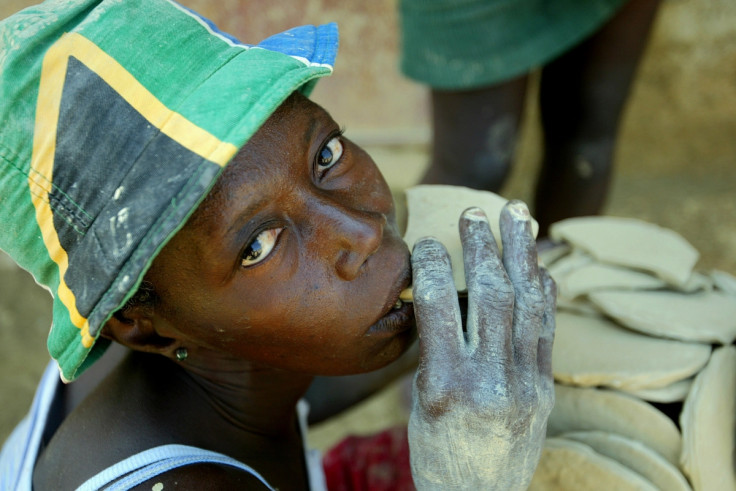Truth Behind Clay Cleansing: The Diet Industry is Sadly Reinforcing Paradoxes of Wealth

Marketed as a natural detox for the body and a weight-loss aid, clay cleansing is the latest diet fad to take the market by storm. The process normally involves swallowing bentonite clay tablets or drinking powdered clay with juice – a volcanic ash mined in the US and China – the substance swells inside the stomach to curb hunger pangs.
Although easily dismissed as another invention from the fertile minds of the weight-loss industry, clay diets reflect a darker phenomenon. Levels of poverty in Haiti are generally considered some of the poorest in the western hemisphere, and with rising food prices, many Haitians can barely afford a plate of rice. Images emerged of Haitian mothers preparing a traditional remedy for hunger pangs: mud pies made of dried yellow dirt from the country's central plateau.
Plagued with desolate living conditions and violence, the World Bank estimated that in 2001, 78% of Haitians were living below the poverty line. Over the last decade and a half, overseas charities have contributed more than $2.6 billion of aid to the country, of which any obvious benefits have yet to be felt. Yet perversely, developed countries have adopted clay eating for aesthetic purposes – and is now worth £2 billion in the diet industry.
Clay cleansing has several high-profile devotees, including supermodel Elle Macpherson. It has long been prized by women as an antacid and a source of calcium, but for others, it offers a weak lifeline from starvation. In Haiti, hunger burns are called "swallowing clorax" – a brand of bleach.

According to the UN, half of Haiti citizens are undernourished and two-thirds live on less than 50p a day.
"Food is available but people cannot afford to buy it. If the situation gets worse we could have starvation in the next six to 12 months," Prospery Raymond, country director of the UK-based aid agency Christian Aid, told the Guardian.
Charlene, who is 16-years-old with a month-old son, shares a room with her two unemployed parents, five siblings and her baby in the impoverished Haitian commune of Cité Soleil. In the household, a mixture of dirt, salt and vegetable shortening have become a regular meal.
"When my mother does not cook anything, I have to eat them three times a day," she said, adding that although the buttery salty taste is quite nice, they give her stomach pains.
Concerned by increasing popularity of the diet, the Food Standard Agency watchdog has issued a warning about the dangers of ingesting clay-based products. Dangerously high levels of arsenic and lead can trigger kidney damage, nerve damage, anaemia and liver failure. Skin, lung and bladder are just some of the cancers linked to ingesting clay – for some women, this is a price worth paying to be slim.

For Charlene and thousands of others in Cité Soleil, clay cakes have been consumed by impoverished pregnant women seeking calcium, a risky and medically unproven supplement. At first sight, the business resembles a pottery, as women mould clay and water into lines of hundreds of small platters. But they are food, and they are a staple.
Haiti's anguish stems from global economic trends of higher oil and food prices, and slashed remittances from migrant relatives affected by the US downturn. In addition, it is almost entirely reliant on food imports, as domestic agriculture is a disaster. The burning of forests for farming and charcoal led to widespread degradation of the soil and rural infrastructure is largely non-existent.
Back in 2008, the global food and fuel crisis hit Haiti harder than perhaps any other country, forcing a population mired in extreme poverty to the brink of existence. But in its usual unforgiving fashion, the diet industry has adapted a desperate effort to survive into a money-making, waist-cinching phenomenon.
© Copyright IBTimes 2025. All rights reserved.























